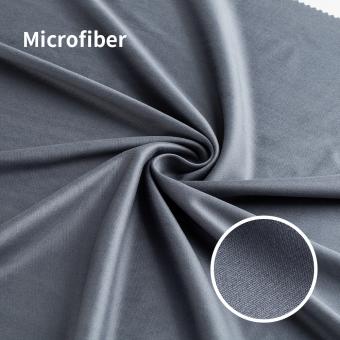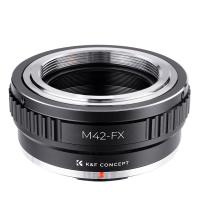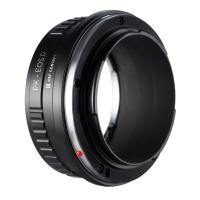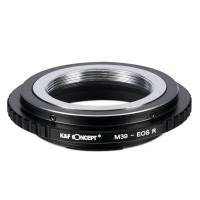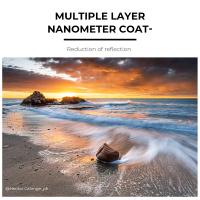What's A Scanning Electron Microscope ?
A scanning electron microscope (SEM) is a type of microscope that uses a focused beam of electrons to create high-resolution images of the surface of a sample. It works by scanning the sample with a finely focused electron beam, which interacts with the atoms on the surface of the sample. This interaction produces various signals, such as secondary electrons, backscattered electrons, and X-rays, which are then detected and used to create an image of the sample's surface. SEMs are capable of producing detailed images with magnifications ranging from a few times to several hundred thousand times, allowing for the examination of the microstructure and topography of a wide range of materials. They are widely used in various scientific fields, including materials science, biology, geology, and nanotechnology, for research, analysis, and characterization purposes.
1、 Principle of operation and electron beam generation
A scanning electron microscope (SEM) is a powerful scientific instrument used to examine the surface of materials at a high resolution. It utilizes the principle of electron beam generation and the interaction of electrons with the sample to produce detailed images.
The principle of operation of an SEM involves the generation of a focused electron beam that is scanned across the surface of the sample. The electron beam is generated by an electron gun, which typically consists of a heated filament that emits electrons. These electrons are accelerated and focused into a narrow beam by electromagnetic lenses. The beam is then directed towards the sample, and as the electrons interact with the atoms on the surface, various signals are generated.
One of the primary signals used in SEM imaging is the secondary electron signal. When the primary electron beam strikes the sample, it causes the ejection of secondary electrons from the surface. These secondary electrons are collected by a detector, and their intensity is used to create an image of the sample's surface topography.
In addition to secondary electrons, other signals such as backscattered electrons and characteristic X-rays can also be detected and utilized for various types of analysis, including elemental composition and crystallographic information.
The latest advancements in SEM technology have focused on improving resolution, speed, and analytical capabilities. For example, field emission SEMs (FE-SEMs) use a different electron source that allows for higher resolution imaging. Additionally, the integration of energy-dispersive X-ray spectroscopy (EDS) detectors into SEMs enables simultaneous elemental analysis while imaging.
Overall, scanning electron microscopes have become indispensable tools in various scientific fields, including materials science, nanotechnology, biology, and geology. They provide researchers with the ability to visualize and analyze the surface of materials at an unprecedented level of detail, leading to new discoveries and advancements in numerous disciplines.

2、 Sample preparation and mounting techniques
A scanning electron microscope (SEM) is a powerful scientific instrument used to study the surface morphology and composition of materials at a high resolution. It works by scanning a focused beam of electrons across the sample surface and detecting the signals generated by the interaction between the electrons and the sample.
SEM has revolutionized the field of materials science and has found applications in various disciplines such as biology, geology, nanotechnology, and forensics. It provides detailed information about the topography, elemental composition, and crystal structure of the sample.
Sample preparation and mounting techniques are crucial for obtaining accurate and reliable results in SEM analysis. The sample needs to be properly prepared to ensure good conductivity, stability, and preservation of its original structure. This involves several steps, including cleaning, drying, and coating the sample with a conductive material such as gold or carbon to prevent charging and improve image quality.
Mounting techniques vary depending on the nature of the sample. Solid samples are typically mounted on a stub using conductive adhesive or carbon tape. Biological samples may require additional steps such as fixation, dehydration, and embedding in resin before mounting. Non-conductive samples like polymers or ceramics may need to be coated with a thin layer of conductive material using techniques like sputter coating or carbon evaporation.
In recent years, there have been advancements in sample preparation techniques to address specific challenges. For example, cryo-SEM allows the imaging of samples at low temperatures, preserving their hydrated state. Focused ion beam (FIB) milling enables the preparation of cross-sectional samples for three-dimensional analysis. Additionally, environmental SEM (ESEM) allows the imaging of samples in a controlled gaseous environment, providing insights into dynamic processes.
Overall, sample preparation and mounting techniques play a crucial role in obtaining high-quality SEM images and accurate analysis. Continued advancements in these techniques will further enhance the capabilities of SEM and enable new discoveries in various scientific fields.

3、 Imaging modes and resolution capabilities
A scanning electron microscope (SEM) is a powerful scientific instrument used to visualize and analyze the surface of materials at a high resolution. It works by scanning a focused beam of electrons across the sample, and detecting the signals generated by the interaction between the electrons and the sample.
One of the key features of an SEM is its imaging modes. The most common mode is secondary electron imaging, where the detector collects the secondary electrons emitted from the sample's surface. This mode provides detailed topographical information, allowing researchers to observe surface features and textures. Another mode is backscattered electron imaging, which detects the electrons that are backscattered from the sample. This mode provides compositional contrast, allowing researchers to distinguish between different elements or phases within the sample.
The resolution capabilities of an SEM are impressive. The latest SEMs can achieve sub-nanometer resolution, allowing researchers to observe structures at the atomic scale. This level of resolution is crucial for studying nanomaterials, semiconductor devices, and biological samples. Additionally, SEMs can provide three-dimensional information through techniques such as electron tomography, which reconstructs a 3D model of the sample from a series of 2D images taken at different angles.
In recent years, advancements in SEM technology have focused on improving imaging speed and sensitivity. This has led to the development of faster detectors and more efficient electron sources, enabling real-time imaging and analysis. Additionally, new techniques such as low-voltage imaging and environmental SEM have expanded the range of samples that can be studied, including delicate biological specimens and hydrated materials.
Overall, the scanning electron microscope continues to be an indispensable tool in various scientific fields, providing researchers with detailed surface information and enabling breakthroughs in materials science, nanotechnology, and biological research.

4、 Secondary electron and backscattered electron imaging
A scanning electron microscope (SEM) is a powerful scientific instrument used to examine the surface of materials at a high resolution. It utilizes a beam of electrons to scan the sample, providing detailed information about its topography, composition, and other physical properties.
One of the primary imaging techniques employed by SEM is secondary electron imaging. In this method, the SEM detects the secondary electrons emitted from the sample's surface when it is bombarded by the electron beam. These secondary electrons carry information about the sample's topography and surface features, allowing for the creation of high-resolution images. This technique is particularly useful for studying the morphology of materials, such as the shape and size of particles, surface roughness, and the presence of cracks or defects.
Another important imaging technique in SEM is backscattered electron imaging. When the primary electron beam interacts with the sample, some of the electrons are scattered back. These backscattered electrons have different energies depending on the atomic number of the elements in the sample. By detecting and analyzing these backscattered electrons, SEM can provide information about the sample's composition and elemental distribution. This technique is especially valuable for studying materials with different atomic compositions, such as alloys or geological samples.
In recent years, advancements in SEM technology have led to improved resolution, faster imaging speeds, and the ability to analyze samples in various environmental conditions. Additionally, SEMs can now be equipped with additional detectors, such as energy-dispersive X-ray spectroscopy (EDS) or electron backscatter diffraction (EBSD), which enable elemental analysis and crystallographic characterization, respectively.
Overall, the scanning electron microscope is a versatile tool that has revolutionized materials science, nanotechnology, and various other fields by providing detailed and high-resolution imaging of surfaces and their properties.






